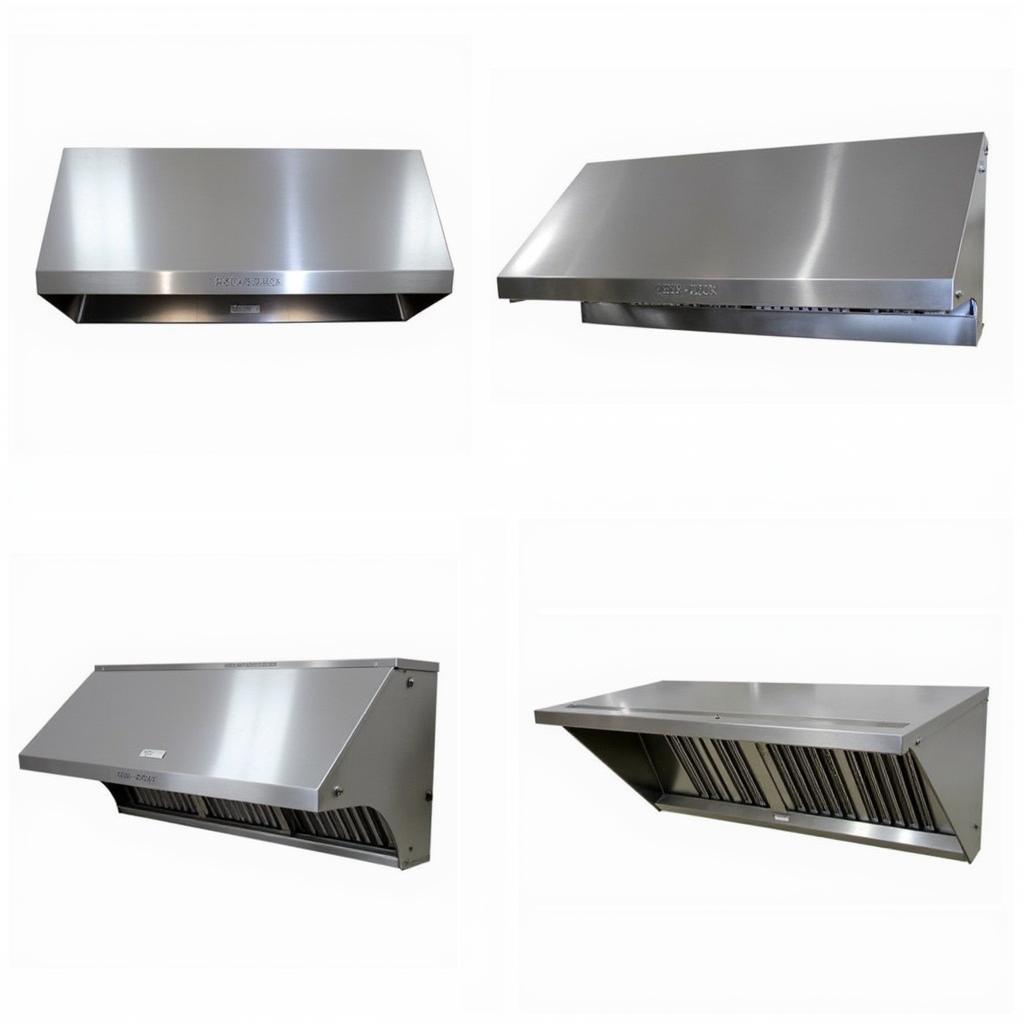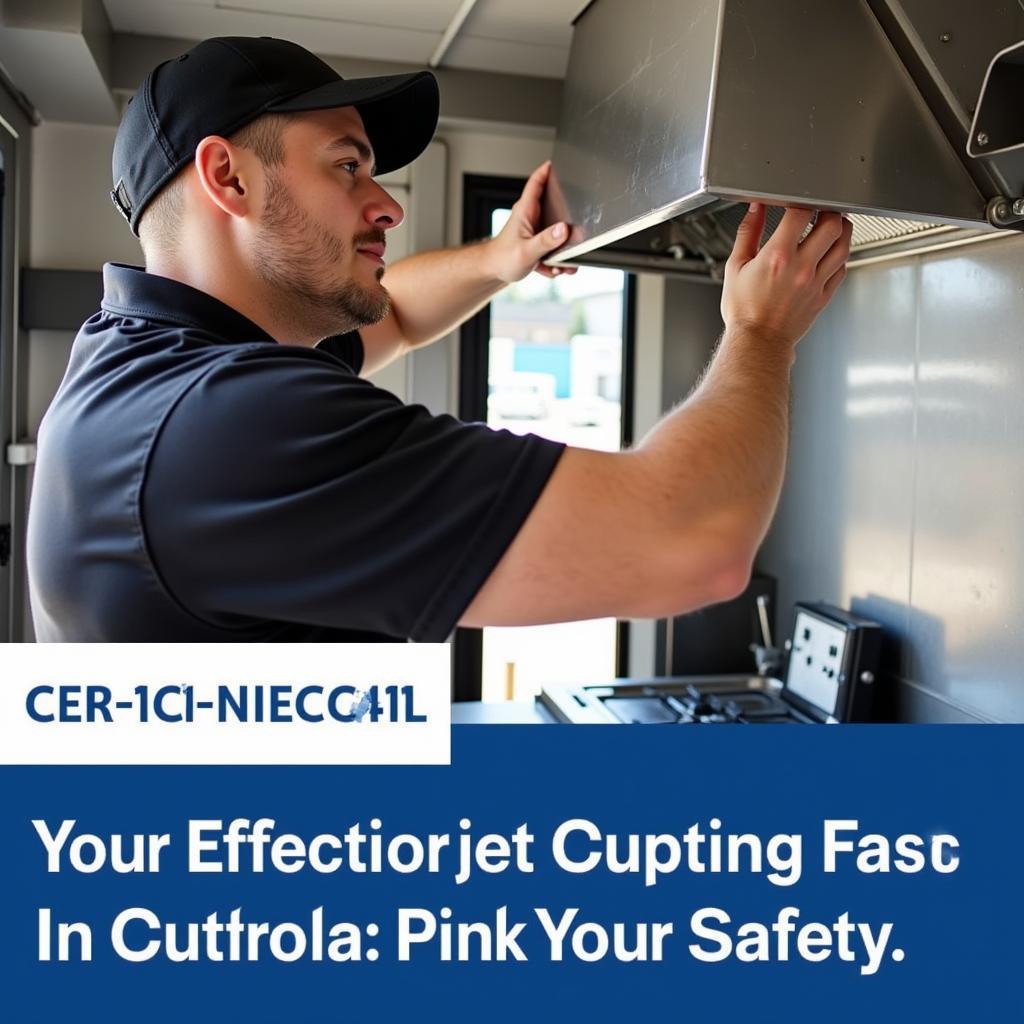Purchasing a food truck is an exciting venture into the world of mobile culinary entrepreneurship. From gourmet grilled cheese to innovative ice cream rolls, your food truck is a blank canvas for your culinary dreams. However, before you hit the road and start serving up deliciousness, it’s crucial to pay attention to the often overlooked, yet essential, aspect of your food truck’s setup: the exhaust hood. A good quality Food Truck Exhaust Hood is not just a legal requirement in most areas, but also a critical component of maintaining a safe and efficient cooking environment.
Understanding the Importance of a Food Truck Exhaust Hood
Imagine this: you’re in the groove, flipping burgers and assembling tacos, but the air inside your truck is thick with smoke, grease, and intense heat. Not only is this uncomfortable for you and any staff, but it also impacts the taste of your food and poses serious health and safety risks.
That’s where a reliable food truck exhaust hood comes in. Its primary function is to remove:
- Smoke: The byproduct of your cooking, smoke can quickly overwhelm a small space, making it difficult to see and breathe.
- Heat: Cooking generates a significant amount of heat. A properly functioning exhaust hood vents this heat, keeping the temperature inside your truck manageable.
- Grease: Airborne grease particles are a fire hazard. An exhaust hood traps these particles, preventing them from building up on surfaces and posing a risk.
- Odors: While delicious to your customers, strong cooking odors can linger inside your truck and even permeate the surrounding area. An exhaust hood helps to neutralize and eliminate these odors.
 Different Types of Food Truck Exhaust Hoods
Different Types of Food Truck Exhaust Hoods
Factors to Consider When Choosing a Food Truck Exhaust Hood
Selecting the right food truck exhaust hood is paramount for a safe and efficient operation. Here’s a breakdown of crucial factors to guide you:
1. Type of Cooking Equipment
The type of food you prepare and the equipment you use directly influence the type of hood you need.
- Heavy-duty cooking: Grills, fryers, and ranges producing high volumes of smoke and grease require hoods with higher CFM (cubic feet per minute) ratings for efficient ventilation.
- Light cooking: If your menu primarily consists of items prepared with minimal smoke and grease, a lighter-duty hood may be sufficient.
2. Size and Layout of Your Food Truck
“Measure twice, buy once” rings true when choosing an exhaust hood. A cramped hood won’t provide adequate ventilation, while an oversized one can be inefficient and costly. Carefully consider:
- Available space: Measure the area where the hood will be installed, considering any obstacles like shelves or equipment.
- Hood coverage: The hood should cover the entire cooking area to capture smoke and grease effectively.
3. Material and Durability
Food truck exhaust hoods are typically made from stainless steel due to its:
- Corrosion resistance: Constant exposure to heat, moisture, and grease necessitates a material that can withstand these elements.
- Easy cleaning: Stainless steel surfaces are simple to clean and maintain, essential for hygiene standards.
4. CFM Rating and Ventilation Power
CFM, or cubic feet per minute, measures the volume of air the hood can move per minute. A higher CFM translates to more powerful ventilation.
- Consult local regulations: Some areas have specific CFM requirements for food trucks. Ensure your chosen hood meets these standards.
- Consider your menu: The intensity of your cooking will determine the necessary CFM. A higher CFM is recommended for operations with heavy smoke and grease output.
5. Filtration System
Efficient filtration is key to trapping grease particles and preventing them from entering the exhaust ductwork, which can create a fire hazard.
- Baffle filters: These are standard for most food trucks, offering a good balance of grease capture and airflow.
- Water mist filters: These utilize a fine mist of water to capture grease and are known for their efficiency.
6. Noise Level
While not the primary concern, consider the noise generated by the exhaust hood, especially if your food truck operates in noise-sensitive areas.
7. Installation and Maintenance
- Professional installation: It’s recommended to hire a qualified technician to ensure proper installation, meeting safety codes and optimizing performance.
- Regular cleaning: Establish a cleaning schedule for your hood, filters, and ductwork. Grease buildup can reduce efficiency and increase the risk of fire.
 Professional Food Truck Exhaust Hood Installation
Professional Food Truck Exhaust Hood Installation
Types of Food Truck Exhaust Hoods
Understanding the different types of exhaust hoods can help you select the best fit for your food truck. Some popular options include:
- Wall-mounted hoods: These are the most common type, mounted directly on the wall above the cooking equipment.
- Island hoods: Ideal for open kitchens where cooking equipment is situated in the center, island hoods are suspended from the ceiling.
- Condensate hoods: Designed for high-moisture cooking, these hoods feature a system that collects and drains condensation, preventing water damage.
Investing in Safety and Efficiency
Choosing the right food truck exhaust hood is an investment in your business’s safety, efficiency, and success. “A well-ventilated kitchen is a happy and productive kitchen,” says Chef Michael, owner of a thriving gourmet burger food truck. “Not only does it make the work environment more bearable, but it also ensures that the quality of our food remains top-notch.” Remember, a properly functioning exhaust hood ensures a comfortable cooking environment, safeguards your equipment, and keeps your food tasting delicious.
Frequently Asked Questions
1. How often should I clean my food truck exhaust hood?
Cleaning frequency depends on usage, but as a general rule, aim for a thorough cleaning at least once a week. Heavy-duty users might need more frequent cleaning.
2. What is a makeup air system, and do I need one for my food truck?
A makeup air system replaces the air removed by the exhaust hood, maintaining balanced air pressure within the truck. Local regulations often require makeup air systems for larger exhaust hoods.
3. Can I install a food truck exhaust hood myself?
While possible, professional installation is highly recommended. It ensures compliance with safety codes and guarantees the hood functions optimally.
4. What are the consequences of not having a properly functioning exhaust hood?
Besides the risk of fire hazards and health code violations, a malfunctioning hood can negatively impact your food’s flavor, create an uncomfortable working environment, and potentially damage your equipment due to excessive heat and grease buildup.
5. How do I determine the right CFM for my food truck’s exhaust hood?
Consider the type and quantity of cooking equipment, your menu, and local regulations. Consult with a hood professional for personalized recommendations.
Need help with your food truck setup?
For all your food truck needs, including top-of-the-line hibachi food truck for sale, contact Mina Cones Food. We’re here to help you every step of the way, from choosing the right equipment to launching your dream culinary business. Call us at 02437655121, email us at minacones@gmail.com, or visit us at 3PGH+8R9, ĐT70A, thôn Trung, Bắc Từ Liêm, Hà Nội, Việt Nam. Our dedicated customer support team is available 24/7.